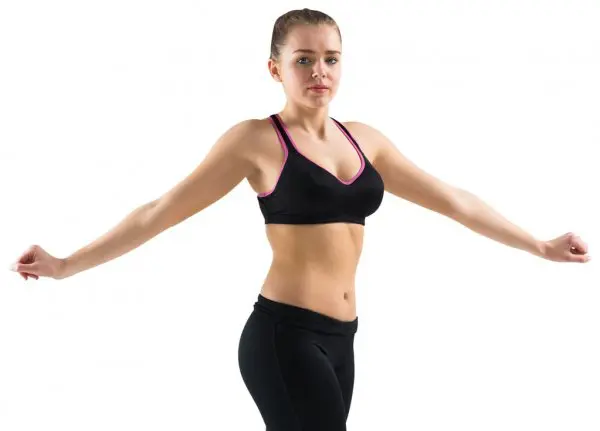
The best online fitness resource you'll ever need. We filter out the BS to ensure you meet your health and fitness goals!

The best online fitness resource you'll ever need. We filter out the BS to ensure you meet your health and fitness goals!

Oblique twists are amongst the best ways to target your core muscles, especially, as the name suggests, the muscles of your inner and outer obliques (the ones that run down the sides of your abs).
There are plenty of varieties of oblique twists, most of which more than earn their place in any training regime. Russian twists, cable 3D crossovers, lumberjacks, hanging oblique raises, and of course, the standing oblique twist, to name but a few.
Standing oblique twist does what they say on the label. They are performed from standing and primarily target the obliques. Your obliques need regular training, as all of your muscles do. And standing oblique twists are a great way to achieve this with minimal (often no) equipment, as standalone exercises (pun not intended!), or as part of a wider circuit.

You don’t need any equipment or specialist knowledge to make use of the standing oblique twist. To perform it, simply:

The main benefits of performing standing oblique twists will be core strength, endurance and stability.
They target the deep muscles of the abdomen, the superficial muscles of the lower abdomen, and the obliques. In the presence of progressive overload, this will result in improved strength, muscle growth, and mind-muscle connection through these areas.
Standing oblique twists are also great for balance and core control.
The movements run through several planes of motion and are unilateral in nature. You will be using one side at a time through each rep. Standing on one leg, moving your core through one side.
This kind of training is vital for developing balance, coordination, and proprioception as your spatial awareness and mind-muscle connections come into play and are stimulated to adapt.
They can also be quite energetic movements, making them perfect for heartrate raising work as part of a larger circuit or giant set. You don’t need any equipment to perform them, further emphasizing their suitability for this kind of free-standing work.
Standing oblique twists are perfect for proprioception, balance, and coordination. However, there are better exercises for stimulating overload, muscular strength, and core stability, especially through the obliques.
This is in part due to the low stimulation nature of the exercise itself. Standing oblique twists are not particularly advanced, other than as a balancing exercise, providing little stimulation to the core when compared with other exercises.
They are also hard to scale upwards, as they are a low stimulation bodyweight exercise – there are few options for increasing intensity by, for example, adding increased weight. They will therefore plateau quite quickly, diminishing the prospect of progressive overload.
Alternative exercises that will work for the same muscle groups whilst being more advanced, more challenging, and more open to progressive overload, include hanging oblique twists, Russian twists, and lumberjacks. As and when standing oblique twists stop feeling challenging to you, explores some of these other options.

The standing oblique twist is primarily a core exercise, and your full core will be engaged by them. These include your abdominal muscles – the deep transverse abdominis and the rectus abdominis of your six-pack – and your obliques – inner and outer, as mentioned above.
As the name suggests, standing oblique twists will primarily work your oblique. All twisting motions will bring the obliques into play, as the obliques are responsible for side to side bending through the torso, twisting through the trunk, and arresting twisting motions through the whole body.
There will be additional engagement running through the serratus and abdominal muscles (which will stabilize your lumbar spine throughout), as well as the hip flexors, as you raise and lower your legs and rotate your arms.